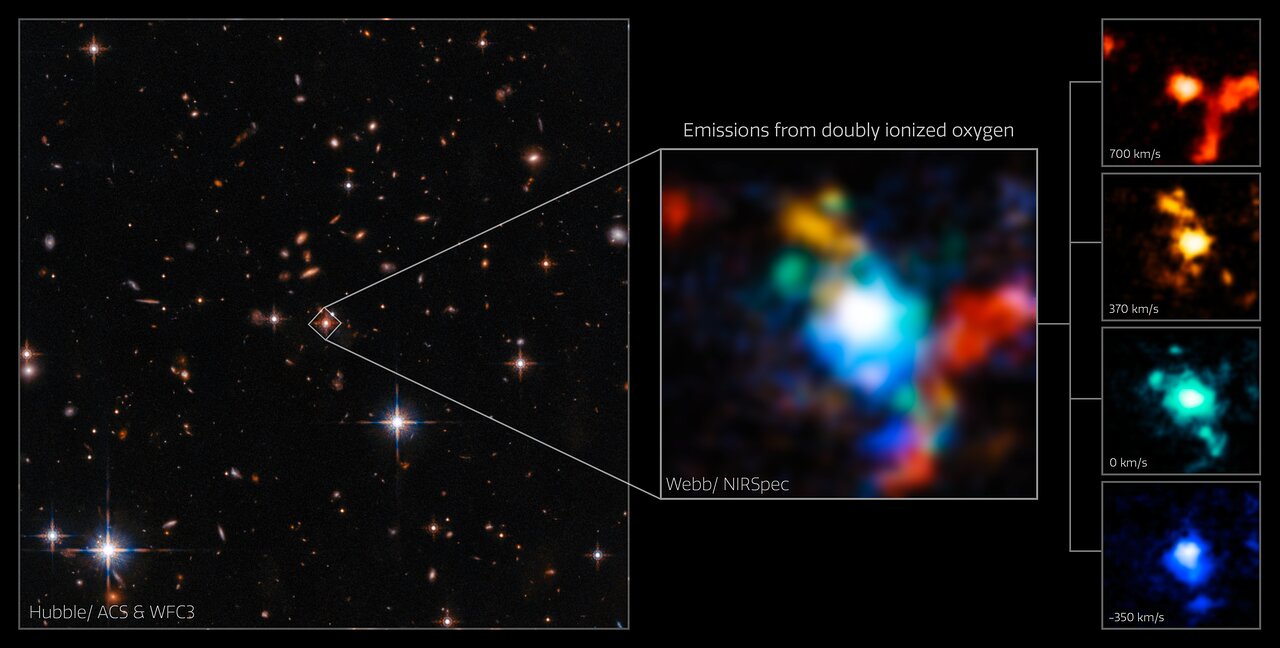Astronomers spotted the most massive cosmic explosion ever recorded
Astronomers have observed the biggest cosmic explosion ever detected, and it is estimated to be 100 times the size of our solar system. Further, the explosion is estimated to be two trillion times brighter than our Sun at its solar peak, and it has remained visible for three years after the explosion.
Our universe is full of intriguing and awe-inspiring events, like rogue black holes romping through space, or galaxies colliding with each other to create even bigger, more massive galaxies. So, when astronomers first noticed AT2021lwx, they were intrigued to see what the event contained. Located over 8 billion light years away, the cosmic event did not disappoint.
The Zwicky Transient Facility (ZTF) first reported the biggest cosmic explosion ever detected. It was later detected by the Asteroid Terrestrial-impact Last Alert System (ATLAS). Both of these facilities are designed to pick up on signals from space that see massive changes in brightness over time. Normally these facilities detect supernovas, or even asteroids and comets whizzing through space.
However, this time the facilities detected something much bigger and much brighter. “We came upon this by chance, as it was flagged by our search algorithm when we were searching for a type of supernova,” Dr. Philip Wiseman, the lead author of a new study on the cosmic explosion, told New Atlas.
According to Wiseman, most tidal disruptions or supernovae events only last a few months, at most, before they fade away, losing their brightness. However, this cosmic explosion has retained its brightness for three years since its original detection in 2020. It doesn’t take the crown for pure brightness, but AT2021lwx is the biggest cosmic explosion that researchers have ever detected or observed.
The scientists aren’t exactly sure what the explosion is, or what caused it. The current belief is that it could be a supercharged quasar, though quasars normally see fluctuations in their brightness, with it flickering up and down over time. The researchers plan to follow up on their observations to learn more about AT2021lwx.
Astronomers have observed the biggest cosmic explosion ever detected, and it is estimated to be 100 times the size of our solar system. Further, the explosion is estimated to be two trillion times brighter than our Sun at its solar peak, and it has remained visible for three years after the explosion.
Our universe is full of intriguing and awe-inspiring events, like rogue black holes romping through space, or galaxies colliding with each other to create even bigger, more massive galaxies. So, when astronomers first noticed AT2021lwx, they were intrigued to see what the event contained. Located over 8 billion light years away, the cosmic event did not disappoint.
The Zwicky Transient Facility (ZTF) first reported the biggest cosmic explosion ever detected. It was later detected by the Asteroid Terrestrial-impact Last Alert System (ATLAS). Both of these facilities are designed to pick up on signals from space that see massive changes in brightness over time. Normally these facilities detect supernovas, or even asteroids and comets whizzing through space.

However, this time the facilities detected something much bigger and much brighter. “We came upon this by chance, as it was flagged by our search algorithm when we were searching for a type of supernova,” Dr. Philip Wiseman, the lead author of a new study on the cosmic explosion, told New Atlas.
According to Wiseman, most tidal disruptions or supernovae events only last a few months, at most, before they fade away, losing their brightness. However, this cosmic explosion has retained its brightness for three years since its original detection in 2020. It doesn’t take the crown for pure brightness, but AT2021lwx is the biggest cosmic explosion that researchers have ever detected or observed.
The scientists aren’t exactly sure what the explosion is, or what caused it. The current belief is that it could be a supercharged quasar, though quasars normally see fluctuations in their brightness, with it flickering up and down over time. The researchers plan to follow up on their observations to learn more about AT2021lwx.
